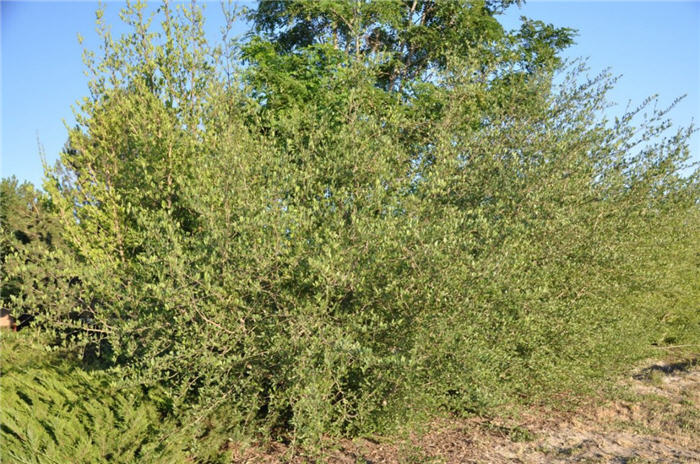| Botanical Name: Sheperdia argentea | |
| Common Name: Silver Buffaloberry |

-
Anatomy
-
Culture
-
Design
Plant Type
Shrub
Height Range
6-12'
Flower Color
Violet
Flower Season
Spring
Leaf Color
Grey Green, Grey
Bark Color
Brown, Grey
Fruit Color
Orange, Red, Yellow
Fruit Season
Summer, Fall
Sun
Full
Water
Low
Growth Rate
Moderate
Soil Type
Sandy, Clay, Loam, Rocky, Unparticular
Soil Condition
Average, Rich, Poor, Well-drained, Moist, Dry
Soil pH
Acid, Neutral, Basic
Adverse Factors
Invasive, Thorns/Spines
Design Styles
Meadow, Ranch
Accenting Features
Fall Color
Seasonal Interest
Summer, Fall
Location Uses
Background, Walls / Fences
Special Uses
Erosion Control, Hedge, Screen, Naturalizing
Attracts Wildlife
Birds, Hummingbirds
Information by: Stephanie Duer
Photographer:
Photographer:
-
Description
-
Notes
Silver buffaloberry is a native, deciduous, large, upright to mounding, suckering shrub that grows about 6 to 12 feet tall and nearly as wide. Spring flowers are yellow and not considered ornamental, but they are followed by clusters of berries that begin green, but ripen in August, turning yellow, orange, or bright red. Leaves are long, narrow, and silvery green with a prominent white midrib. Bark is a warm brown and older bark is furrowed. Due to its size and sucking habit, use it for erosion control, soil stabilization, or in larger naturally-styled landscapes. Well suited to riparian corridor areas. A Utah native.
Grow in full sun and well drained soil. Tolerates a range of soil types, and withstands moist or dry soils and is pH adaptive, growing in soils up to 8.0. It is frequently confused with Russian Olive, an invasive species: buffalo berry flowers occur in clusters (russian olive's flowers occur along the stems length); buffaloberry's fruit is green, turning yellow to red (russian olive's fruit is green to buff); buffaloberry leaves and branches are opposite (russian olive's leaves and branches are alternate). Fruit is edible, though tart until a couple of frosts, but robins, sparrows, grosbeaks and others won't wait that long. If you are pruning or working around it, be mindful of the thorns.